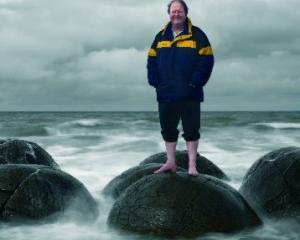How wood burners are used is a major contributor to winter air pollution in urban areas, new research is finding.
Wood burners are a major source of heating in New Zealand and particularly in Otago.
National Institute of Water and Atmospheric Research (Niwa) air quality scientist project leader Jeff Bluett said the way wood burners were operated was an important component of their performance.
Niwa monitored emissions from wood burners of different ages and models in six homes in Christchurch during 21 winter days this year. Scientists also analysed fuel samples and measured the weight of wood used, gaining good information about fuel people used and how much was used each night.
"We are finding that when we look at the distribution of emissions, wood burners in particular houses are `gross emitters'."
Those houses were producing "grossly disproportionate" amounts of particulates which could harm people's health.
"What we want to do is identify the reasons why those gross emitting events occur."
So far, the data had confirmed an earlier Environment Canterbury study that most of the emissions occurred within the first hour of a fire being lit, he said.
Niwa's study showed there were bursts of high emissions soon after the burner had been reloaded with wood.
The type of fuel being used and the conditions within the firebox appeared to be strong factors in determining emission levels, Mr Bluett said.
The full results of the study would be released next year.
Otago Regional Council director of environmental information and science Dr John Threlfall said it was good to get scientific confirmation of what was already assumed.
"Maybe, at the end of the research, there can be some fresh education on tips to keep smoke down, but the problem we are always going to have is that we have no control over what people put on a fire or how they put it on."
Otago's air plan rules were modernising burners in Central Otago now, and in other airzone towns in the region over a period of time.
"This is a good start, but then really hard work begins on making sure people burn only dry wood, get the fire started quickly and keep the air flow up."
The rules in Central Otago would effectively mean the end of coal smoke and rubbish burning, he said.
However, the only guaranteed way of keeping the smoke down was automated systems, such as pellet fires or boilers, gas and electric, because there were no smoke filter systems on the domestic market, Dr Threlfall said.




